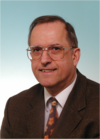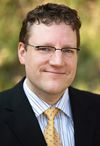Research, teaching, and practical application are the main drivers of technological progress, continuously redefining the state of the art. For more than 30 years, IT-Designers has maintained close partnerships with regional universities:
- Esslingen University of Applied Sciences
- University of Tübingen
- Brunel University
- Technical Academy Esslingen
This collaboration has a long tradition. Joint activities include teaching assignments, industrial Ph.D. programs, theses, internships, and summer courses.
The internal Scientific Advisory Board advises the company on technical matters related to the current state of the art in computer science and related disciplines. It serves as an important instrument to promote the mutual transfer of knowledge between research and teaching on the one hand and practical application on the other.
The members of the Scientific Advisory Board of IT-Designers are:
Prof. Dr. rer. nat. Goll

Prof. Goll is a professor of information technology at Esslingen University of Applied Sciences. He founded STZ Softwaretechnik in 1994, thereby laying the foundation for the IT-Designers Group.
Prof. Dr. rer. nat. Koch

Prof. Koch is a professor of mathematics in the Faculty of Basic Sciences and a member of the University Council at Esslingen University of Applied Sciences. His core areas of expertise are mathematics, geometric data processing, CAD, virtual reality, computer graphics, MATLAB, numerics and algorithms.
Prof. Dr.-Ing. Hendrik Lensch

Prof. Lensch is a professor of computer graphics at Eberhard Karls University in Tübingen. His research areas include computer-aided photography, 3D reconstruction, reflectance measurements, real-time image processing and GPGPU programming.
Prof. Dr. rer. nat. Martin Stämpfle

Prof. Stämpfle is a professor of mathematics and dean of the Faculty of Fundamental Sciences at Esslingen University of Applied Sciences. His core areas of expertise are mathematics, numerical analysis, algorithms, simulation, MATLAB and driver assistance systems.
Prof. Dr. Wolfgang Rosenstiel (†2020)

Prof. Rosenstiel was Professor of Computer Engineering and Dean of the Faculty of Mathematics and Natural Sciences at Eberhard Karls University in Tübingen. His areas of research included high-level synthesis and verification, embedded systems, computer architecture, parallel computing, neural networks and multimedia.
